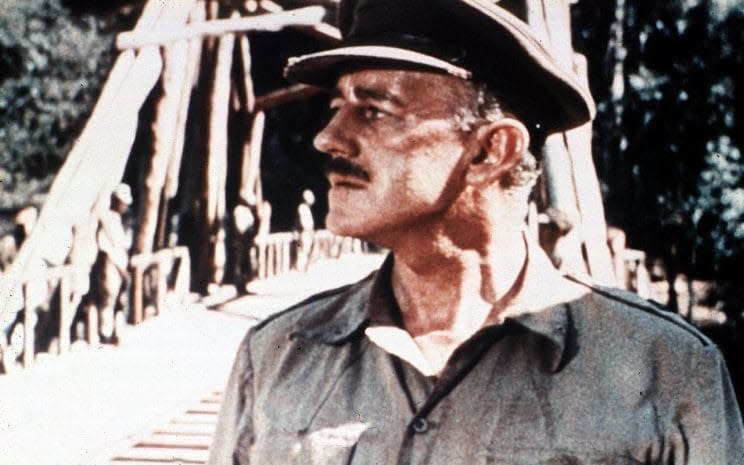Why the War Office hated 'inauthentic' Bridge on the River Kwai

The Bridge on The River Kwai is regarded by many as one of the great British films of the 20th century.
But newly released documents reveal that the War Office had misgivings about its release, believing the depiction of British prisoners of war cooperating with their Japanese captors “would not go down well with the British public”.
The film failed to “authentically portray the behaviour and conduct of British officers”, the War Office said, and bore little relation to the truth.
The comments were made as part of correspondence with Sam Spiegel, the Hollywood producer, who was seeking RAF cooperation in making the 1957 film.
Set in a Japanese prisoner of war camp in Burma, it starred Sir Alec Guinness as Lt Col Nicolson, and Sessue Hayakawa as the commandant Col Saito.
Ordered to work on the Burma Railway, Nicolson initially insisted that officers were exempt from forced labour under the Geneva Convention. Ultimately, however, he took leadership of the task, deciding that it could boost morale among his men and demonstrate the superiority of the British.
The story was fictional, based on the novel by Pierre Boulle. In real life, the officer at the bridge in question was Lt Col Philip Toosey; former PoWs say he never worked alongside the Japanese, and attempted to delay progress with acts of sabotage.
In a letter, Maj A G Close, working in the War Office’s PR department, wrote: “I do not think much of this story. In the first instance it is quite untrue and only very occasionally resembles the facts as they were at the time. I am perhaps biased as I worked for three-and-a-half years on this particular railway.
“I have however asked independent people to read the script and they agree with me that it would not go down well with the British public.”
The War Office eventually agreed to RAF cooperation but said it was “not entirely happy about this film story, which does contain certain inaccuracies and which does not, in our opinion, always authentically portray the behaviour and conduct of British officers”.
Others who strongly disapproved of the film included Lt Gen Arthur Ernest Percival, who commanded British forces during the Malaya campaign and became chairman of the Far East Prisoners of War (Fepow) committee.
In a letter made public by the National Archives and reported in The Guardian, Lt Gen Percival said: “The subsequent picture of the bridge being built under the British Colonel’s directions in a most efficient manner is however a very false one.
“It would have been very wrong for prisoners-of-war to have willingly done this because it would have been contrary to their duty.
“Our members are as a body justifiably proud of their conduct as prisoners-of-war. They suffered a great deal for it and they would now deeply resent the presentation of any film which tended to misrepresent and cast aspersions on their conduct. On their behalf, I am writing to ask that the Film Censor may be requested to prohibit the showing of this film.”
The film was released in 1957 and went on to win seven Oscars for best picture, director, actor, adapted screenplay, cinematography, film editing and original music score.
Those who enjoyed the film included Lt Col Toosey, according to his family. His son, Patrick, told the BBC in 2017 that his father - who later became Brigadier Sir Philip Toosey - thought the film was “good theatre but totally removed from reality”.


